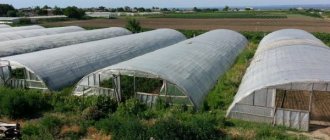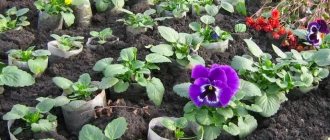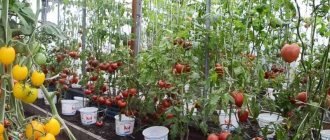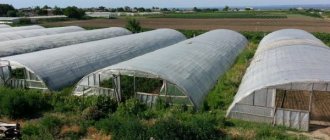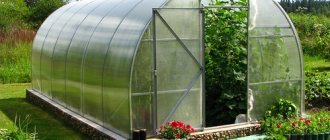Petunias are annual and perennial plants belonging to the Solanaceae family. These flowers come in a huge variety of shapes, sizes and colors. Spherical compact specimens or spreading ampelous ones are grown. Their color range knows no boundaries: they come in white, blue, red, pink, cream, yellow, purple, you can’t count all the possible shades. At the same time, there are single-color flowers and two-color ones: with a border along the edges of the petals or an asterisk inside, with spots, stripes, and darker veins. They also differ in appearance: they can be very small or quite large, terry, fringed or simple. The popularity of petunias is due to several factors:
- Firstly, these plants are unpretentious and are able to survive even in not entirely favorable conditions. They grow equally well in flower beds and balconies, in flowerpots and plant pots, in parks, gardens, near shops, cafes, restaurants, near roads and gas stations.
- Secondly, petunias bloom from early spring until late autumn, so the flower beds do not have to be renewed throughout the warm season.
- Thirdly, it is impossible not to note the incredible beauty of this plant. Petunias are not suitable for cutting; they are not placed in vases, but it is difficult to imagine a brighter and more spectacular outdoor decoration.
Such valuable qualities determine the success of a business based on growing these flowers. The business idea itself is quite fresh and has not yet become widespread. But the demand for petunias is high, so finding ways to sell seedlings is not at all difficult. With the right approach, such a business will be very profitable, and all investments and costs will pay off in less than 1 year.
Growing petunias on an industrial scale
Petunias grow well in the climatic conditions of central Russia. They feel good in open ground, so amateur gardeners often skip the stage of seedlings in pots and scatter the seeds directly into the soil in the flower bed. But given the fact that the first buds on plants appear 2 - 2.5 months after germination, this option is completely unacceptable for business. In city flower beds, parks and near various institutions, the first blooming petunias appear in the spring. This means you need to start growing seedlings much earlier. On an industrial scale, petunia is grown in specially equipped, heated and illuminated greenhouses with an established irrigation system. Workers constantly look after the sprouts, because it is not enough to scatter the seeds and just wait for the sprout to appear and grow to the desired size. The seedlings need to be fertilized, weeded to remove weeds, and the tops of the stems need to be pinched so that the plant will be more curly and lush in the future. Growing petunias in large quantities requires significant investment, labor, and the purchase and installation of expensive equipment. It is very difficult to start your business right away with such volumes, so it is better to “start” with small batches of up to 1,000 plants.
FROM CUTTINGS - MORE PROFITABLE
Growing commercial hanging petunias from cuttings is beneficial because they develop much faster and, accordingly, bloom earlier. To grow ampelous petunia for sale (in flowerpots), the easiest way is to purchase already rooted cuttings from professional growers.
If you plan to receive marketable products already in mid-May - early June, plant the cuttings around mid-March immediately in pots dia. 22 cm or in pots - 3 pieces each.
The substrate must be moisture-absorbing, nutritious and loose; it is best to purchase a ready-made soil mixture with the addition of clay, fraction 0-40 mm. If you want to prepare your own earthen mixture, the composition should be as follows: high-moor peat, humus and sand in a ratio of 3-1-1.
fertilizers to the soil when planting , for example, Osmokot (approximately 45-65 g per pot or cache-pot).
When planting ampelous petunias in containers more than one row, they must be given an inclination of approximately 45 degrees. relative to the edge of the container. In this case, the shoots hang down faster and cover the containers.
Although petunias are drought-resistant, they will bloom much more profusely in moderately moist soil. To prevent water from stagnating in pots placed in open (and other) areas, make sure there are drainage holes. And one more secret to the abundant flowering of ampelous petunias: place them in a sunny place, because in partial shade they will bloom much weaker.
A powerful cascade in plants can only be achieved by forming cuttings after planting in a container using pinches. The shoots are pinched for the first time when they have reached a length of 7 to 10 cm. The earlier you pinch , the more side shoots you will get. The second pinching is carried out when the length of the shoots is from 10 to 15 cm - remove the growing point, leaving the already established flower buds. In the future, in order to ensure uniform growth of the bush, only strongly grown shoots are pinched. Regularly (if planted tightly), rotting, weak shoots are removed and, if necessary, plants are thinned out.
If the ampelous petunia has large flowers, it is highly advisable to remove rotten flowers in wet weather, preventing leaf diseases. The flowerpots (after planting the cuttings) are left for better rooting of plants on racks (9 flowerpots per 1 sq.m.) for 1 month - this makes pinching and observation much more convenient. After which the flowerpots are moved to the upper tier of the greenhouse - from 500 to 1100 flowerpots can be placed on an area of 500-1000 sq.m. At the same time, you can grow flower seedlings or potted plants on the middle tier.
To prevent the flowering of petunias from decreasing, they must first be fed every 5-7 days with a solution of complex fertilizers: pH 5.5, NPK 20-5-20, Ec = 2 mS/cm. Subsequently, add potassium to the fertilizer: NPK 12-5-25; at the same pH and Ec values. The fertilizer must contain microelements .
You can carry out root and foliar feeding, preferably alternately, preventing the formation of excess salts in the pots. Top drip irrigation is optimal for watering and fertilizing; it allows you to dose the nutrient solution into the root zone of the plant. Watering should be done infrequently, but abundantly.
Step-by-step plan for starting a petunia growing business
What is needed to grow a large number of young seedlings? First of all, you need to find a sufficient area for seedlings. If it is quite possible to scatter seeds in an ordinary apartment, then picking and planting in pots (or in the ground) will require more space. In the first stages, a summer cottage plot or land near a private house will be quite suitable for this. But before you take action and start sowing petunias in large volumes, you need to consider possible ways to sell flowers. And only after making sure that your efforts will not be in vain, and all the grown seedlings will be sold out, can you proceed directly to production issues. First, you should find out where it is more profitable to purchase the raw materials necessary for planting and growing: seeds, soil, fertilizers, pots in which the plants will be sold (most often their role is played by special plastic cups or cassettes). You can buy all this in specialized gardening stores or in hypermarkets such as Castorama, OBI, Auchan and others. The former, as a rule, guarantee high quality, and the latter – lower prices. Subsequently, you can buy seeds, soil and other consumables at wholesale centers and directly from manufacturers at more favorable prices, in addition to which additional discounts are often provided depending on the volume of purchase, on average from 5 to 25%. You should also take care of the greenhouse in advance. Since petunias disperse from January to the end of March, there is no way to do without it. You can order an assembled structure or purchase its individual components and install it yourself. The second option is less expensive. A greenhouse consisting of a wooden frame and stretched oilcloth will require even less investment. But it is inferior in strength and practicality to its polycarbonate counterparts, so it may require repair or replacement as early as next season.
When to sow petunia for sale
Petunias for sale need to be sown several times a season, from January to March. This way you will earn more on sale, due to constantly flowering bushes, at the right time.
I advise you to sow petunia in three stages:
- In January - elite (expensive) seeds (for flowerpots and flowerpots). And when the time comes to form bushes (by pinching), try to root the cut cuttings for additional profit;
- In February - good varieties and hybrids (moderate price range), in large (500 ml) cells and liter pots, for sale to the middle class;
- Sow the last petunia seeds in March. Use uncommon, cheap varieties (prepare them for mass sales as a binder).
The amount of petunia required for each seeding depends on the market segment in which trade is carried out. The higher the social status of the trading platform, the greater the demand for expensive products.
Some gardeners sow petunia up to ten times per season in order to sell seedlings at the peak of flowering. This allows you to increase sales volumes and the price of goods.
I advise you to purchase petunia seeds from a decent seller who does not cheat with varieties and expired goods. For example, in the online store “Garshinka”.
How much money do you need to start a business?
You should not immediately scatter thousands of seeds and hope for an impressive profit, especially if you have no experience in growing such plants. It is better to start with a small batch of petunias, consisting of 500 - 600 pieces.
- First you need to purchase seeds. They are usually sold in bags of 10 - 15 pieces. It is not worth buying all the seeds of one variety; customers should be given at least a small choice. The cost of one bag varies from 30 to 150 rubles; accordingly, the price of the plants sold will also be different.
- For this number of petunias you will need about 120 liters. land. It is more profitable to purchase specialized soil in large packages of 50 liters; one package will cost about 300 rubles.
- When sowing and during the growing process, petunias will need to be fertilized, otherwise the flowers will grow weak, thin, and not suitable for sale. One package (3 kg) of fertilizer costs about 250 rubles; all seedlings will need 4 such packages.
- Cassettes for seedlings (pack of 10 pieces, for 9 seedlings each) cost 60 rubles. A batch of 600 pieces will require 7 packages.
Fertilizer application
Timely feeding of the plant plays an important role. They are combined with irrigation (a barrel with a pump or special equipment).
When the seedlings germinate, they will receive nutrition from the substrate. Therefore, it is necessary to fertilize with the appearance of the first leaf:
- Complex fertilizers are usually used. Calcium nitrate and ammonium nitrate are added separately. They help young seedlings develop.
- They also add iron chelate (it is better to buy from imported manufacturers).
- All products should be purchased in large packages from a trusted supplier or professional company.
- The main thing is that the additive has the necessary elements, is balanced, and the pH level does not exceed 6.5. Then the microelements will be perfectly absorbed by the seedlings.
- When pulling out sprouts, only calcium fertilizer is added.
- If the leaves turn yellow, foliar fertilizing with iron chelate is performed.
How to choose equipment for growing flowers
To grow petunias you definitely need a greenhouse. The minimum cost of a structure made of galvanized profile pipes and polycarbonate is 10,000 rubles. A homemade greenhouse made of wood and oilcloth will cost less, but we do not take this option into account due to its low strength and fragility.
- For planting, let’s take 20 bags of seeds (10 pcs.) costing 30 rubles, 20 bags costing 60 rubles, 5 bags costing 85 rubles, and 5 bags costing 100 rubles. The total cost of purchasing seeding material to obtain 600 petunias will be 2,725 rubles.
- 3 packages of soil (50 liters each) will cost 900 rubles.
- Fertilizer: 4 packages x 250 = 1,000 rubles.
- Cassettes for seedlings: 7 packs x 60 = 420 rubles.
- The biggest expense item is the greenhouse; you will have to spend 10,000 rubles on it. But this is a one-time investment, the need for which will arise next time only when the business expands.
Planting seedlings in open ground
Instructions for planting seedlings in open soil:
- 1-2 days before planting, water the seedlings generously.
- Holes are made in the ground in the garden, equal in size to the volume of the containers in which the bushes were located. Lightly water the prepared holes.
- Carefully remove the seedlings from the containers, leave a lump of earth on the roots, and move them into the holes.
- The root collar of the petunia should be above the surface of the ground and should not be deepened.
- Fill the empty holes with soil and compact it lightly.
- Water.
There must be a distance of at least 20 cm between petunia bushes.
How much can you earn from growing petunias?
As a result, we find that you will have to invest 15,000 rubles in growing 500 - 600 petunias. In addition, you need to take into account the costs of lighting and heating the greenhouse, which is about another 3,000 - 5,000 rubles. Taking into account the average market prices for seedlings of these flowers, the total income from the sale of the entire batch will be about 31,000 rubles, and the net income will be 11,000 - 13,000 rubles. The benefit from selling the second and subsequent batches of the same volume will be more significant. The net profit from each of them will be about 23,000 rubles.
Diseases arising at the seedling stage, pests
Not only adult petunia bushes are affected by diseases, but also young seedlings. The cause of diseases is non-compliance with the rules of agricultural technology.
Most often, a disease such as blackleg occurs, associated with rotting of the roots due to regular overwatering.
To get rid of the disease, it is necessary to remove the infected seedling and treat all the soil in the container with disinfectants. To prevent the disease from returning, you must carefully follow the recommendations regarding watering.
Young, succulent seedlings can be attacked by insect pests:
- aphids - leaves curl;
- spider mite - yellowing of leaf plates, appearance of white threads of cobwebs on the seedling;
- whitefly - leaves visible larvae on the leaf blades.
Insects must be manually collected from the bushes, and then the seedlings must be treated with a soap solution (only laundry soap is used). When the number of colonies is large, insecticides are used.
To avoid infection of seedlings and the appearance of insects, it is necessary to carefully care for the seedlings and strengthen their immunity by regularly feeding them.
Preparing seedlings is not a quick method, but all the efforts of the grower will pay off when the petunias bloom in full force, creating colorful waterfalls of bright flowers
How to set up sales of grown petunias
It’s not enough to grow petunias; you also need to organize timely and profitable sales of your products. There are a lot of potential clients. These are ordinary summer residents who prefer not to waste time on seedlings, but to plant already grown flowers, enterprises involved in the improvement of city streets and courtyards, owners of cafes, shops, and other institutions. Petunias also sell well on the regular market. To attract customers, you can place advertisements on the Internet, in print publications, and post them in public places. To find potential buyers, more active methods are also used, for example, calling and personally visiting various organizations. It should be borne in mind that retail sales of petunias are somewhat more profitable. It brings more income, but takes a significant amount of time and effort. Wholesale usually comes at a lower price. In this case, up to 10–15% of profit is lost, but it becomes possible to sell all the seedlings at once. At first glance, it may seem that growing petunias is a rather labor-intensive and time-consuming process. In practice, everything is much simpler. This does not require any special skills or abilities, and the resulting plants can be sold within 2 months after germination. You just need to put in a little effort, and your work will certainly be rewarded!
Ampelous petunia: how to grow seedlings, plant characteristics
Ampelous petunia is a herbaceous perennial plant native to South America. The species includes a large number of varieties that are distinguished by long and lush flowering. The flowers can reach ten centimeters in diameter and are shaped like a funnel.
Different varieties may have ruffled, double, semi-double or single petals. The color ranges from snow-white to dark, with some species having a black tint.
Thanks to its long, flowing branches and lush flowering, this species has become widespread in landscape design and is often used in vertical gardening. Boxes, cups or tablets are used for sowing ampelous. Growing seedlings of this species is no different from growing any other type of these flowers.
Distinctive features appear only in an adult plant:
- The length of ampelous shoots ranges from 30 cm to a meter. As they grow, the branches begin to fall down rather than deviate to the sides. This is especially appreciated in design, since the plant can be given the desired shape by placing the flower in a hanging container;
- The foliage is large, soft, the older the flower, the larger its diameter; the younger, the smaller and more delicate it is;
- Flower bells are located throughout the shoot, covering it completely along the axils if they are small. Large flowers are not located so often. The same plant can have two flowers of different sizes and colors, which gives the plant a special charm. Moreover, the buds are not necessarily monochromatic; often the petals of one bud are painted in two colors, while the inner part will have a brighter shade.
The ampelous branches falling to the ground look quite elegant and attractive. It is not surprising that this species has become so widespread, both in landscape design and among home gardens.
What documents are needed to open
The package of documents for running a flower business is not as large as for licensed activities. Traditionally, an entrepreneur will need:
- certificate confirming registration as an individual entrepreneur;
- a document confirming the payment of a single tax (with a simplified taxation scheme);
- rental agreement for a greenhouse and other premises, if necessary;
- passport details of hired persons;
- labor contracts concluded with employees;
- certificate of registration with the Pension Fund.
Business registration
It is not necessary to register such a business as a business ; the easiest way is to issue a certificate of cultivation of crops in a private household plot (personal subsidiary plot).
There is no need to pay sales taxes, the only payment is land tax: 0.3% of the cadastral value of the plot.
A certificate is issued by the local administration. To obtain it, you need documents from the owner and family members, information about the cadastral number and area of the plot, a list of crops grown and equipment (tools).
Which tax system to choose?
In the case of a flower shop or small floriculture farm, they usually choose a “simplified” system of income minus expenses of 15%. It attracts payers with its ease of accounting and reduced likelihood of inspections by regulatory authorities. In this case, the florist deducts 15% of the profit received as a tax burden. For accounting, you will need to maintain a book in which information about income and expenses is recorded. The system allows you to avoid the complexities of accounting and balance sheet submission.
Pests
Thrips, aphids, whiteflies and spider mites are the main pests of ampelous petunia.
The whitefly is easy to see: flying white insects fly up at the slightest touch to the leaves. Plants affected by whitefly first turn yellow and then wither. To get rid of the pest, spray petunias with Actellik or Confidor (according to the instructions).
Traces of the vital activity of aphids are also clearly visible: the attacked plants are covered with secretions shaped like drops of sugar syrup, and the leaves are deformed. Spraying with Confidor, Aktara or aphid preparations will be required.
Thrips are very small (up to 0.5 mm) in size. Their presence is indicated by black or greenish scatterings of excrement, silvery streaks and indentations on the upper side of the leaves. Against thrips, it is necessary to treat plants with Intavir, Aktara or Confidor.
Spider mites are also invisible to the naked eye. The alarm signal is a thin cobweb on the leaves and stems and general depression of the plants. Insecticides for other pests have a rather weak effect on spider mites. Neoron, Demitan or Apollo will help from him. Be sure to spray the entire plant, including the underside of the leaves.
Quite often, petunia plantings are subject to invasion by slugs ( slugs ). In this case, superphosphate scattered on the surface of the earth helps a lot.
Growing technology
Seeds can be planted either in open ground, but always under a greenhouse film, or in pots with further transplantation of the sprouts into a greenhouse. It is intended to use high quality seeds to produce flowers suitable for sale. To purchase seed material, you must consult experienced flower growers. For sowing, a fine-grained substrate is used, with a low level of salinity and necessarily including peat. Seeds can be either clean or coated with a protective shell. Those that are covered with a shell are better suited for growing seedlings, as they facilitate sowing and protect from mechanical damage. Emerging sprouts need a significant amount of lighting. At an early age, these flowers develop rather slowly, since they first build up the root system. Information signs are placed along the beds, which should indicate the varieties, sowing dates and the number of seeds sown. Petunias are quite responsive to fertilizing with mineral and organic fertilizers. Adult plants should be watered once every 3 days.
(
1 ratings, average: 5.00 out of 5)
Loading…
Similar business ideas:
- TOP 30 business ideas with minimal investment
- Business idea for selling flowers in glycerin: how to make...
- The best business ideas for a village
- TOP 30 business ideas without investment
Problems arising from early planting
Growing petunia seeds is not difficult; this process can be done even by novice gardeners without proper experience. But often experienced gardeners have problems with germinating seed.
Common mistakes:
- Abundant watering, which leads to stagnation of moisture - the seedlings begin to wither due to rotting of the root system. Excess moisture can cause blackleg disease. If the plant is sick, it must be transplanted into a separate container and treated with fungicides. Seedlings should be watered moderately as the top layer of soil dries.
- No pinching procedure. Pinching stimulates growth, helps in the formation of a beautiful bush and further promotes abundant flowering.
- Yellowing of the leaves and their curling is a sign that young plants have been attacked by spider mites. Seedlings must be treated with insecticides.
- Weak seedling growth indicates iron deficiency. At the seedling stage, petunias need regular feeding with fertilizers.
A common problem is seedlings being pulled up. This occurs due to lack of light.
Pinching may not be carried out in dwarf varieties, in which the correct crown shape is determined by selection.
Due to the insufficient duration of daylight at the end of winter - beginning of spring, seedlings must be additionally illuminated with phytolamps
Petunia multiflora (multiflora)
The group of multi-flowered petunias got their name due to the abundance of small (5-8 cm in diameter) flowers on one bush. The height of plants in this group reaches 20-35 cm, the shape of the bush is compact. They bloom 70-90 days after sowing.
Multi-flowered petunias are valued not only for their decorativeness, but also for their unpretentiousness. Flowers of this particular group have significantly higher resistance to windy, hot or rainy weather compared to petunias of other groups.
Popular varietal series of multi-flowered petunia:
- Prime Time : bred the USA, represented by F1 hybrids. The bush is compact, 25-30 cm high, flower diameter is 5-6 cm. The petals of some hybrids have graceful wavy edges. Flower color options: traditional (red, pink, blue-violet), star-shaped (white star on a red background), with contrasting veins.
- Merlin : bred in Japan, represented by nine F1 hybrids . The height of the bush is 25 cm, the diameter of the flowers is 6.5-7 cm. Flower color options: carmine pink, light pink, red with a white border, salmon, etc.;
- Carpet : bred in the USA, represented by 14 F1 hybrids . The series is distinguished by its resistance to diseases (for example, gray rot), early flowering, and tolerates heat well. The bush is compact, 25 cm high. Flower color options: lemon yellow, deep red, etc.;
- Mirage : bred in the USA, represented by 13 F1 hybrids . Features: double petals with a diameter of 6-9 cm. Compact bush, 30 cm high, flower color options: coral, pink-lilac with dark veins, blue-violet, pale lilac with violet-burgundy veins, lilac-pink with violet veins, pink with crimson-red veins. If you like terry petunia, plant plants from this varietal series.
New varieties of ampelous petunia Typhoon
This is another large plant, the shoots of which grow up to one and a half meters long. They produce gorgeous large flowers up to 5 cm in diameter. There are so many flowers that leaves and stems are not visible because of them.
New ampelous petunia Typhoon – Hot Pink F1. Translated from English it means hot pink. That is, not delicate, pale, but rather the bright pink, conspicuous color of the flowers.
Pictured is Typhoon Hot Pink
By the way! The Typhoon series differs very favorably from other species in that the plants are resistant to winds and recover very quickly after rains. Apparently that's why it got its name.
Mini petunia Cinderella
Unlike those described above, this is a type of miniature spherical petunias. They look gorgeous in flowerpots, pots, along the edges of borders and flower beds. Numerous mini-flowers cover the foliage and bloom for a long time.
A new variety of petunia from the Sinderella series – Red Vaned. In the photo you can see that its flowers are red, but not solid. Their center and veins are bright, and the edges appear more pink.
Pictured is Cinderella Red Vaned
Petunia floribunda (profusely blooming)
This group of petunias is considered intermediate between the groups of large-flowered and multi-flowered plants. The flowers are smaller than those of grandiflora (7-10 cm in diameter), but more resistant to various weather vagaries. Compact bushes 20-35 cm high are well suited for borders and look especially impressive in massive plantings. They bloom on the 80-90th day after sowing.
Popular varietal series of petunia floribunda:
- Sonja : a very popular variety series, represented by 11 F1 hybrids. Bush height 25 cm, flower color options: raspberry-burgundy with a white star, pink-lilac with lilac-burgundy veins, light purple with purple veins, raspberry-pink with a white star, red with a white border, traditional colors (raspberry, pink , purple, etc.);
- Celebrity : represented by F1 hybrids, characterized by increased resistance to hot and rainy weather. The height of the bush is 25 cm, the petals are covered with a contrasting “mesh” of veins that darken at the base of the flower. Color options: white with blue veins, pink-lilac with burgundy veins, salmon-red with dark veins, raspberry-pink with a yellowish-white center, etc.
How not to get confused in the varieties of petunias and choose the right one
An absolute favorite among summer gardeners and everyone's favorite, petunia offers an unimaginable selection of varieties. With huge or small, simple or double, originally colored or classic flowers, petunia varieties can be selected according to color, shape, and your preferences. They simply cannot get bored, because the range is replenished every year with dozens of new products with improved characteristics. Selecting just a few varieties from hundreds of available options is not an easy task. And in the selection of bright petunias for the garden, their decorative qualities are far from the most important thing.
How not to get confused in the varieties of petunias and choose the right one.
Unpretentious
Small-flowered bush and ampelous petunias are considered the most unpretentious. They do not suffer from summer temperature changes, quickly restore the shape of their petals after rain and wind, and bloom profusely until late autumn.
Surfinia, which is classified as a petunia, is distinguished by its unpretentiousness and abundant flowering. It is planted in hanging pots and flowerpots, as it forms lush bushes with hanging shoots.
Storm is a group of varieties of large-flowered petunia, recently bred. The plants are distinguished by their bright, long-lasting flowering and resistance to adverse weather conditions.
Multi-flowered petunias are easy to maintain and withstand the vagaries of the Russian climate. Interesting varieties:
- Alderman (blue);
- Angelica (light yellow).
Storm Lavender
Alderman



